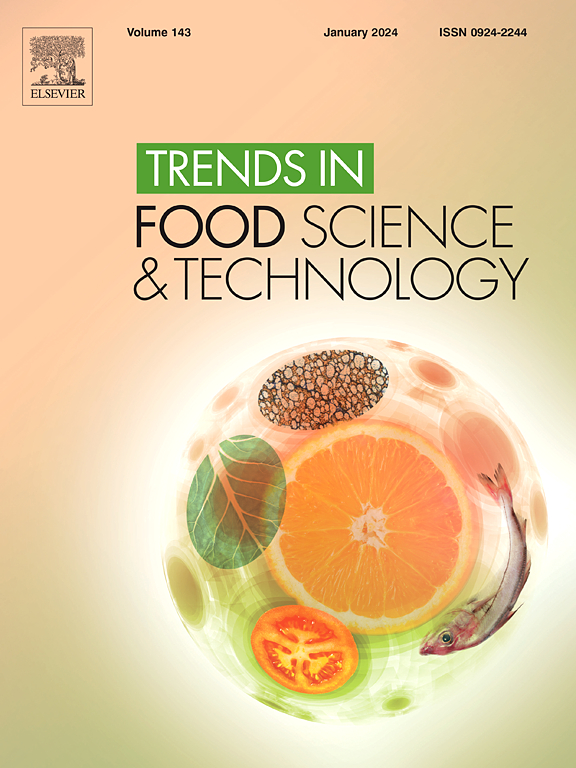Multiscale bioimpedance detection methods and modeling for dynamic non-destructive monitoring of agricultural product quality
IF 15.1
1区 农林科学
Q1 FOOD SCIENCE & TECHNOLOGY
引用次数: 0
Abstract
Background
Ensuring the quality and safety of agricultural products is a crucial aspect of modern agricultural production. However, existing detection methods are often hindered by limitations such as complexity, high costs, and time consumption. To address these challenges, multiscale bioimpedance detection has emerged as a non-invasive and rapid alternative. This technique evaluates the electrical impedance characteristics of agricultural products, offering valuable insights into their internal properties and presenting a more efficient solution for quality monitoring.
Scope and approach
This paper examines the principles of the multiscale bioimpedance detection method, focusing on its technical framework, measurement system, and data processing techniques. Additionally, it explores how this method facilitates dynamic and nondestructive monitoring of agricultural product quality at multiple levels, including molecular, cellular, and individual scales. The objective is to showcase its applications in multiscale agricultural product detection, emphasize its advantages in enhancing detection accuracy, and analyze its technical characteristics and practical value. Lastly, the paper outlines potential future development directions for this technology.
Key findings and conclusions
Multiscale bioimpedance detection can achieve targeted pretreatment at the molecular, cellular and individual levels in the quality monitoring of agricultural products. By constructing a detection framework and model, the purpose of non-destructive testing can be achieved. This multiscale approach can comprehensively assess the macro and micro levels of agricultural products and help to judge their quality status more accurately. At the same time, in order to further improve the stability and accuracy of quality assessment, this technology needs to be integrated with emerging technologies for optimization.
求助全文
约1分钟内获得全文
求助全文
来源期刊

Trends in Food Science & Technology
工程技术-食品科技
CiteScore
32.50
自引率
2.60%
发文量
322
审稿时长
37 days
期刊介绍:
Trends in Food Science & Technology is a prestigious international journal that specializes in peer-reviewed articles covering the latest advancements in technology, food science, and human nutrition. It serves as a bridge between specialized primary journals and general trade magazines, providing readable and scientifically rigorous reviews and commentaries on current research developments and their potential applications in the food industry.
Unlike traditional journals, Trends in Food Science & Technology does not publish original research papers. Instead, it focuses on critical and comprehensive reviews to offer valuable insights for professionals in the field. By bringing together cutting-edge research and industry applications, this journal plays a vital role in disseminating knowledge and facilitating advancements in the food science and technology sector.
 求助内容:
求助内容: 应助结果提醒方式:
应助结果提醒方式:


